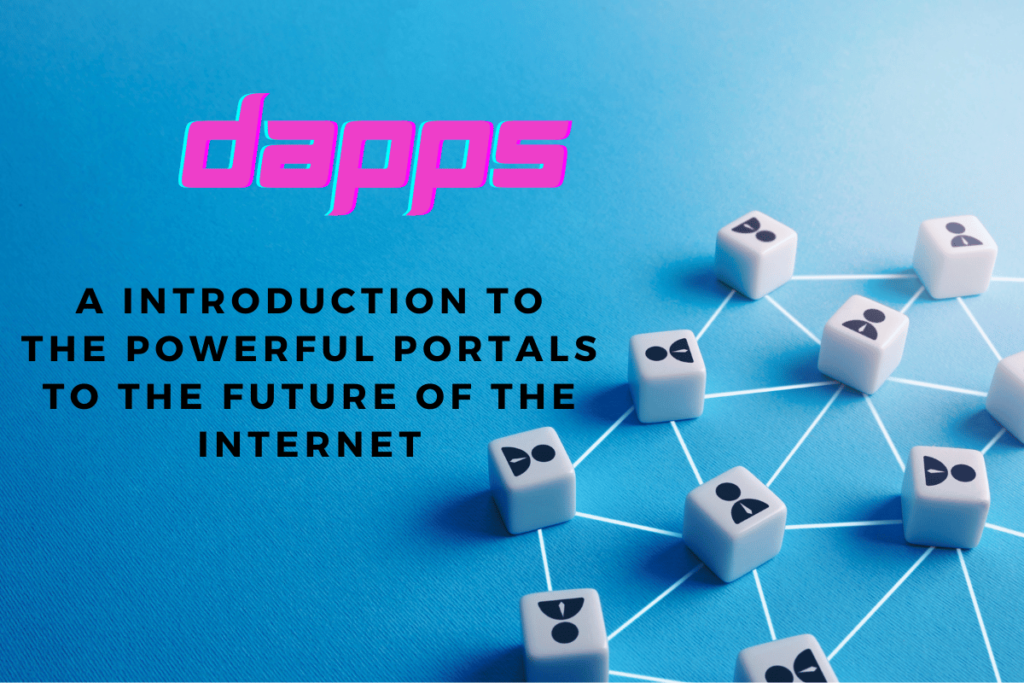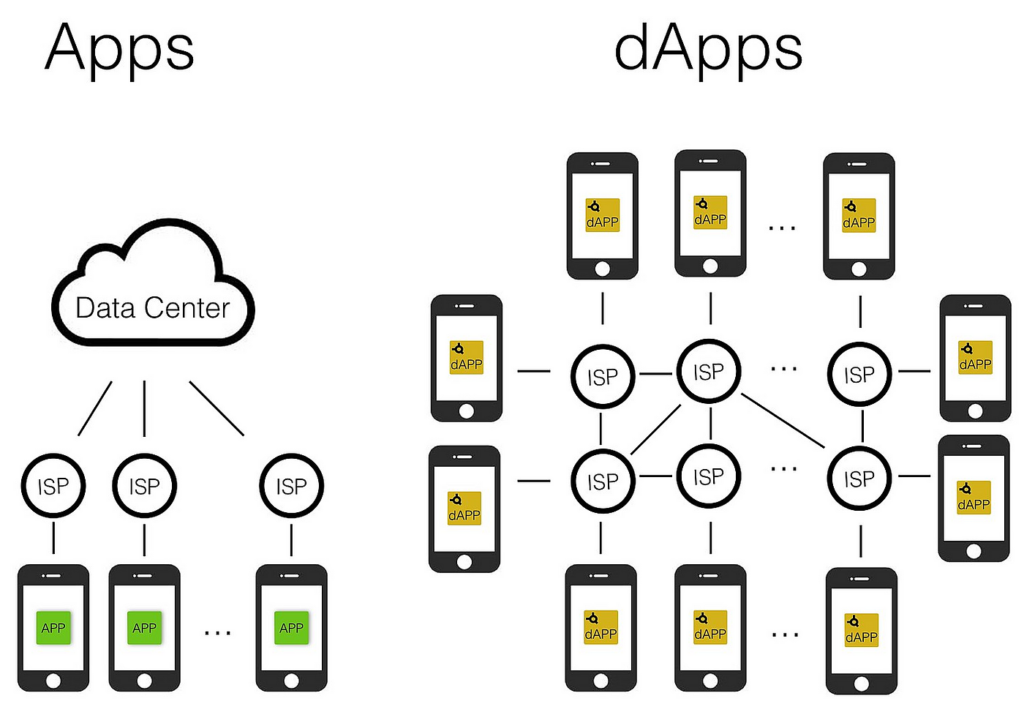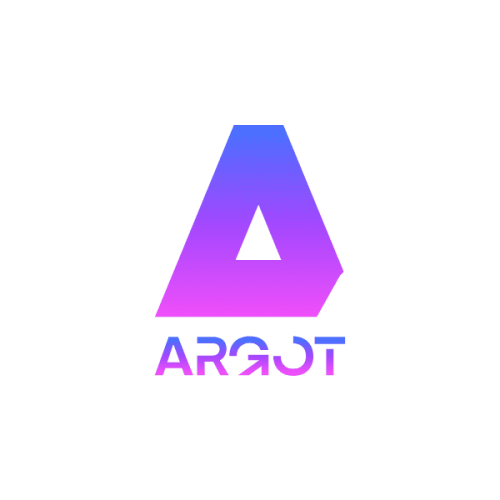
In the vast expanse of the digital universe, a new era is dawning—one where decentralized applications, or dApps, take center stage, offering unparalleled security and autonomy. Unlike their centralized counterparts, dApps leverage blockchain technology, laying the groundwork for a transformative disruption of traditional online services. They are creating a trustless and permissionless ecosystem that puts the power firmly in the hands of users. This would be a seismic shift in control. This blog post will explore dApps’ intricate mechanisms, myriad of benefits, and inherent challenges, providing a comprehensive understanding of their role in shaping the digital future.
What are dApps?
So what the heck is a dApp? At their essence, Decentralized Applications (dApps) are more than just the latest tech buzzword—they are the embodiment of innovation and user empowerment. These software platforms bypass centralized control by running on a blockchain network, fostering a peer-to-peer, autonomous environment. Since they are open-source, everyone has the chance to access their code, cultivating a sense of trust and enabling the community to lead the development and refinement process. The bedrock of dApps is the blockchain’s immutability and security, serving as a shield against fraud and system downtimes. At the heart are smart contracts—pieces of code that execute themselves under agreed conditions, reducing the need for middlemen. The potential applications are boundless, spanning finance, gaming, social media, healthcare and more—a true testament to their ability to remodel traditional business models for a democratized digital future.
dApps in simpler terms:
- Their open-source nature promotes transparency and a collaborative development environment.
- Immunity to fraud and system downtimes due to blockchain’s robust architecture.
- They have a variety of industry applications, challenging conventional business frameworks.
How do dApps work?
Decentralized applications (dApps) operate on a blockchain or peer-to-peer network of computers, distinguishing them from traditional applications that run on centralized servers. dApps are powered by smart contracts, which are self-executing contracts with the terms of the agreement directly written into code. These smart contracts automate the operations of the dApp, allowing it to function without a central authority, thereby reducing the risk of censorship, downtime, or interference from a single point of control.
Users interact with dApps through a blockchain wallet, which serves as their digital identity and means of transaction. When a user performs an action on a dApp, such as submitting a vote or making a payment, this action is sent as a transaction to the blockchain. The network then processes this transaction, typically through a consensus mechanism, ensuring it is valid and adding it to the blockchain. This process ensures the integrity and transparency of the application’s data. Because dApps are built on blockchain technology, they inherit features such as security, transparency, and immutability, making them particularly suitable for applications requiring high levels of trust and security, like financial services, voting systems, and decentralized marketplaces.
For the skimmers, this is how dApps work:
- Operate on decentralized networks, immune to central authority control.
- Utilize smart contracts for process automation and secure transactions.
- Offer transparent, trustless interaction experiences via a public ledger.
What are the benefits of dApps?
As we transition to a more decentralized web, apps housed in centralized silos will become old school thinking. Instead, dApps will bring forth a treasure of benefits, tailor-made for a digital age:
- Decentralization: Letting go of centralized clutches means data sovereignty returns to users, and with it, the peace of mind that no single failure can cause system collapse.
- Enhanced Security: dApps, girdled by blockchain’s immutable and transparent nature, present fortresses against cyber threats, making them far less prone to hacking endeavors compared to their centralized relatives.
- No Censorship: They carve a niche in the digital world where free speech and unhindered access to information flourish, unfazed by the heavy hand of central governance.
- Open Source and Transparency: Transparency isn’t just a buzzword in the realm of dApps. It’s a foundational principle enabling communities to propel development and trust.
- Reduced Costs and Improved Efficiency: By cutting out the intermediaries, dApps pass along the gift of savings and efficiency to their users—a stark contrast to their transaction-heavy forerunners.
How do dApps differ from traditional apps?

Do you remember MTV’s claymation series Celebrity Death Match? If not it doesn’t matter because Apps v dApps isn’t anything quite like that but it would be fun if it was (clearly my money would be on dApps though). Let’s compare them anyway! Despite offering similar end-user functionalities, dApps break the mold by running within the bounds of blockchain networks, ensuring their operations remain untethered to any central authority. Contrast this with traditional apps, whose very essence revolves around centralized control points, leaving them vulnerable to data breaches. dApps’ open-source nature encourages a community-led development environment, starkly different from the closed source, proprietary traditional apps. In other words, dApps prompt more creativity and innovation. dApps employ smart contracts to execute transactions, leaving no room for intermediary-driven inefficiencies. The greatest distinction lies in how personal data is treated—where dApps empower users with control, traditional apps collect and store data in centralized databanks, often a privacy concern.
Ding! Ding! I think we have an up and coming new champion in the transformative potential of dApps. For those needing an instant replay of how dApps promise to float like a butterfly and sting like a bee:
- dApps run on blockchain for decentralized control versus centralized servers for traditional apps.
- dApps offer greater security through distributed data.
- dApps prioritize open-source development for transparency over proprietary, closed systems.
Popular dApps and their use cases
We are diving into the world of dApps, several standouts paint a vivid picture of the potential and versatility dApps possess. Each case represents a facet of the dApp ecosystem, revealing the depth and breadth of possibilities within the decentralized landscape.
CryptoKitties

CryptoKitties is a blockchain-based virtual game that allows players to adopt, raise, and trade virtual cats. Launched on the Ethereum blockchain in 2017, it became one of the first attempts to use blockchain technology for recreational and gaming purposes. Each kitty is unique and owned by the player, verifiably stored on the blockchain. The game uses the concept of non-fungible tokens (NFTs) to represent each kitty, making them collectible items with varying traits and values. Players can breed their kitties to create offspring with unique genetic attributes, potentially giving rise to a kitty with rare traits and higher value. CryptoKitties demonstrated the potential of NFTs and blockchain to create a new type of digital collectibles market.
Uniswap

Uniswap is a decentralized exchange (DEX) built on the Ethereum blockchain, offering a platform for the automated trading of decentralized finance (DeFi) tokens. Unlike traditional exchanges, Uniswap utilizes a user-generated liquidity pool rather than an order book. This means that users supply the platform with liquidity by locking tokens into smart contracts, and trades are made directly against these liquidity pools using an algorithm to determine prices. This setup allows for decentralized, permissionless trading where anyone can contribute liquidity and earn trading fees in return. Uniswap represents a significant innovation in DeFi, providing a foundation for the emerging ecosystem of decentralized financial products.
Chainlink

Chainlink is a decentralized oracle network designed to bridge the gap between smart contracts on the blockchain and real-world data. Smart contracts often require external data (e.g., weather conditions, stock prices, sports scores) to execute their terms, but blockchains cannot access this data directly. Chainlink’s network provides reliable, tamper-proof data to smart contracts, ensuring their proper execution based on real-world conditions and events. This functionality enables a wide range of applications, from automated insurance payouts based on weather data to sports betting platforms that use real match outcomes. Chainlink is pivotal in expanding the capabilities of smart contracts, making them more applicable and relevant to real-world scenarios.
MakerDAO

MakerDAO is a decentralized autonomous organization (DAO) and a pioneering project in the DeFi space, running on the Ethereum blockchain. It is best known for creating DAI, a stablecoin pegged to the US dollar but backed by cryptocurrency collateral rather than fiat currency. Users can generate DAI by locking their Ethereum-based assets into smart contract vaults as collateral. The MakerDAO system is designed to maintain the stable value of DAI against the US dollar through a system of smart contracts, governance by MKR token holders, and automated feedback mechanisms. MakerDAO’s approach to stablecoins is revolutionary, offering a decentralized, collateral-backed currency that can be used for savings, lending, or as a stable medium of exchange in the volatile cryptocurrency market.
Building dApps
The process of building dApps is a quilt of complexity and innovation. Standing on the premises of blockchain technology, dApps are inherently immune to censorship and grant users an unprecedented magnitude of data control. Crafting them revolves around the sturdy wheelhouse of smart contracts, automating transactions with unyielding precision. With open-source DNA, these applications elicit an evolution driven by community input and undiluted innovation. Infusing industries with a decentralized spirit, whether in finance or gaming, dApps pave the path toward an internet of unfettered connection and shared authority.
- Based on blockchain technology for unmatched safety and transparency.
- Foster community-driven innovation through open-source ethos.
- Enable wide industry integration for a decentralized digital future.
The Future of dApps
Peering into the crystal ball, dApps herald a future ripe with change and challenge, phasing out antiquated internet frameworks with blockchain-powered promise. With smart contracts at their core, these applications promise automated and secure dealings transparent enough to leave no room for deception. The integration of AI and IoT looms on the horizon, expanding the boundaries of what dApps can achieve. As the technology simplifies and user interfaces grow more intuitive, mass adoption becomes less a question of if and more one of when. The regulatory landscape, too, is bound to shift, striking the balance between legitimizing dApps and addressing the trio of privacy, security, and scalability challenges.
- Anticipated fusion with AI and IoT for expanded capabilities.
- Surge in user adoption driven by ease of use.
- Regulatory evolution to support widespread use and address challenges.
Some Final Thoughts
As we reflect, it becomes clear: dApps are not just a fleeting trend but the vanguard of a decentralized renaissance in digital technology. Anchored in the distributive might of blockchain, they promise a revolution across industries from finance to healthcare, marking a pivotal stride in our collective digital journey. The embrace of dApps swings open the doors to a world of absolute transparency and newfound control, shifting dominion from the old guards of centralization to the global collective. The pathway to dApp success lies intertwined with the fate of blockchain technology – its growth, adoption, and navigational prowess through digital hurdles. With that, we acknowledge that dApps are the cornerstones of a nascent, decentralized digital world, auguring an era of unparalleled innovation, fairness, and security. Welcome to the future, a place where each user holds a key to the digital kingdom.

A DeFi, Fintech and Web3 brand strategy and content marketing agency
Building Web3 Brands. Connecting Web3 Communities.
